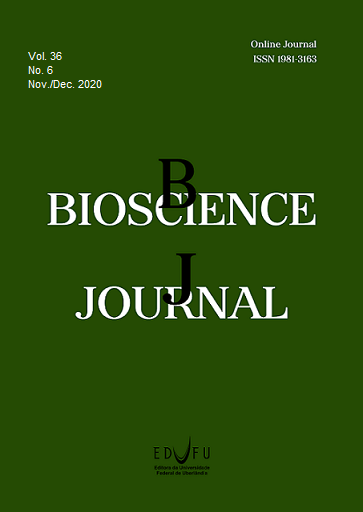Evaluation of the availability of mass of forage: morphological responses and chemical composition of Tanzania grass subjected to two pasture-management strategies
DOI:
https://doi.org/10.14393/BJ-v36n6a2020-47870Keywords:
Cutting intensity., Light interception., Paddocks., Stocking rate.Abstract
The objective of this study was to evaluate the morphogenetic traits and chemical composition of Tanzania grass using a fixed rest period or according to light interception at 95%. The treatments consisted of evaluations of two Tanzania-grass pasture-management strategies: (1) LI95 - animals entered the paddocks when the pasture reached 95% of light interception (LI), with three days of paddock occupation; and (2) FR - the pasture was managed with a defoliation interval (DI) of 30 days, and three days of paddock occupation. The experimental area consisted of 4 ha, with 22 paddocks per treatments. Ten recently-calved cows were used per treatment in year 1, and eight cows were used per treatment in year 2. Sward height, forage mass, and morphological components and their chemical composition were evaluated. The management strategies used on the Tanzania grass pasture did not affect pasture mass or height in the pre- and post-grazing conditions, or the proportion of stems. However, the proportion of leaves was greater in the paddocks with 95% light interception. The crude protein content was higher in the paddocks with 95% light interception; the other nutrients were not affected. In conclusion, management adopting 95% light interception does not influence morphogenetic traits. Nevertheless, it promotes an increase in the crude protein content of grasses.
Downloads
Published
Issue
Section
License
Copyright (c) 2020 Michele Gabriel Camilo, Alberto Magno Fernandes, Tadeu Silva de Oliveira, Danielle Ferreira Baffa, Sarah Ellen Eduardo Bernardo, Camila da Conceição Cordeiro

This work is licensed under a Creative Commons Attribution 4.0 International License.





